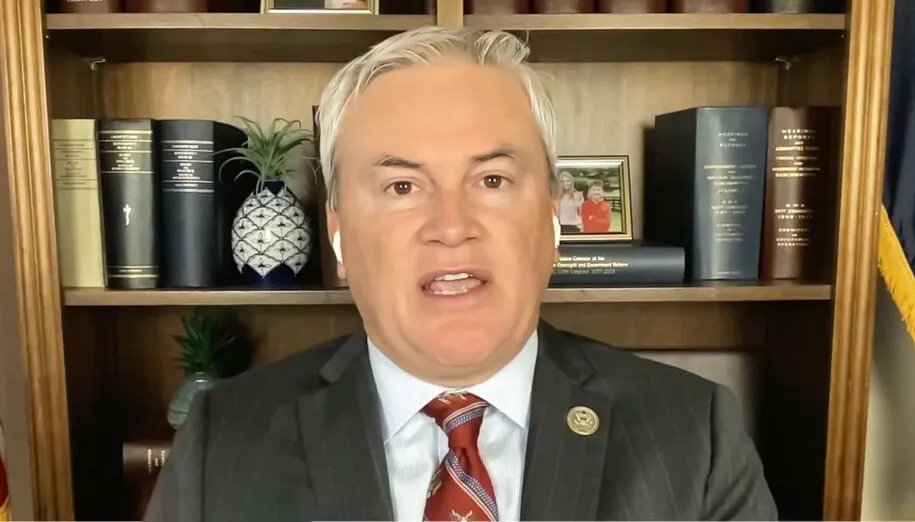“Are working-class white voters shooting themselves in the foot by making common cause with a political movement that is fundamentally inimical to their economic self-interest?” Joshua Zeitz asked in Politico online.
A Politico contributing editor, Zeitz meant Trumpism. The multitude of blue collar whites who’ve embraced the movement are indeed risking their own livelihoods, said Dr. Ricky L. Jones of the University of Louisville in an interview. Ask him why, and he won’t pull punches.

“It’s racism,” replied the Pan-African Studies department chair. “But nobody wants to talk about that.”
Jones said that the president’s base—which includes well-heeled whites as well—”has some really, really difficult questions to ask itself, about the things it believes, the things it will allow, and the things it will justify.”
On the campaign trail, Trump pandered to racism – as well as sexism, nativism, homophobia, and religious bigotry. He turned the dog-whistle into a bullhorn.
Trump’s rallies were overwhelmingly white, raucous, and often peppered with bigoted and obscene shouts from the faithful, who sometimes waved Confederate flags. In addition, The New York Times online ran what the paper headlined as “Unfiltered Voices From Donald Trump’s Crowds.”
Some Trump fans went beyond his familiar “fake news” charge against the media. They yelled “Lügenpresse” at print and broadcast news reporters covering their candidate. It means “lying press” in German. When Hitler and the Nazis were grabbing power by terrorizing their opponents, Nazi Brown Shirts often beat up journalists from anti-Nazi newspapers, claiming they represented the “Lügenpresse.”
Mused Zeitz: “In exchange for policies like the new tax bill, which several nonpartisan analyses conclude will lower taxes on the wealthy and raise them for the working class, did they really just settle for a wall that will likely never be built, a rebel yell for Confederate monuments most of them will never visit, and the hollow validation of a disappearing world in which white was up, and brown and black were down?”
Yes, again, Jones maintained.
Except for Trump’s openly white supremacist fans, most whites in the president’s corner hotly deny that bigotry motivated the ballot they cast. Jones quoted author James Baldwin: “He said, ‘I cannot believe what you say because I see what you do.'”
 Trump’s core backers include neo-Nazis, Ku Klux Klan members, and white nationalists who don’t hide their bigotry. The president has proved reluctant to disavow them.
Trump’s core backers include neo-Nazis, Ku Klux Klan members, and white nationalists who don’t hide their bigotry. The president has proved reluctant to disavow them.
“I don’t know how to paint them other than moral monsters,” Jones said.
Research backs up Jones’ claim that racism was the main motivator for most Trump voters. “There have now been numerous studies that found support for Trump is closely linked to racial resentment, defined by [researchers Matthew] Fowler, [Vladimir E.] Medenica, and [Cathy J.] Cohen [in The Washington Post] as ‘a moral feeling that blacks violate such traditional American values as individualism and self-reliance,'” German Lopez wrote in Vox in December. “This is crucial to understanding both Trump’s rise and how to overcome Trump.”
Nonetheless, much, if not most, of the mainstream media is hesitant to flat call Trump a racist, though he “has been obsessed with race for the entire time he has been a public figure,” wrote David Leonhardt and Ian Prasad Philbrick in The New York Times last month.
They added, “the media often falls back on euphemisms when describing Trump’s comments about race: racially loaded, racially charged, racially tinged, racially sensitive. And Trump himself has claimed that he is ‘the least racist person.’ But here’s the truth: Donald Trump is a racist. He talks about and treats people differently based on their race. He has done so for years, and he is still doing so.”
Leonhardt and Philbrick provided what they called “a definitive list” of Trump’s racist statements going back to the 1970s, when his real-estate firm sought to avoid renting to African Americans and gave preferential treatment to whites, the federal government said.
Jones said Trump and like-minded white conservative Republicans “of the privileged class and the moneyed class” are creating “false cleavages” based on race to divide the working class.
He added that not coincidentally many Trump supporters are foes of removing Confederate statues in the South and in Union border states like Kentucky.
During the presidential campaign, especially in rural Kentucky, it was not uncommon to find Trump-Pence yard signs sprouting below Confederate banners flying from housetops and flagpoles. “The same people who vote against their economic interests are the people who will recreate history and tell you that the Civil War wasn’t about slavery,” Jones said. “They will completely alter the conversation to lie willfully or out of ignorance, but the results are the same.”
Jones let fly in a Louisville Courier-Journal op-ed column in which he called for the removal of the tall Confederate monument on U of L’s Belknap Campus: “Let me be clear about what the battle flag, statues, and other symbols of the Confederacy are. They are representations of hate, emptied-out ideas of racial superiority, inhumanity, and devilishness. Louisville’s statue is no different. It is a celebration of backwardness.”
The 1895-vintage, 70-foot stone and bronze obelisk was hauled away to a Brandenburg park in 2016. The monument’s supporters included Trump Republican congressional candidate Everett Corley, whom Rep. John Yarmuth, D-Louisville, buried in a landslide in the 2016 election. Yarmuth was among those who wanted the memorial removed.
Jones also said that Trump has capitalized on surging anti-intellectualism, which, like ocean tides, has ebbed and flowed throughout American history. Trump, according to the professor, is exploiting times in which society “is more concerned with reality television than with reality.”
One might think that getting so many people to vote against their jobs and livelihoods would be mission impossible. Trump made it mission accomplished; Zeitz pointed out precedent from the post-Reconstruction era South.
Almost all the freed slaves were landless and were dirt poor; so were many whites. Thousands of blacks and whites were tenant farmers or sharecroppers, trapped in a seemingly endless cycle of poverty and despair.
In the 1890s, leaders of the new Populist Party urged poor Southerners, African American and white, to rally at the ballot box and turn out the white supremacist Democrats who kept both groups down. (The Populists also challenged poor Northern workers to vote out the greedy, anti-union “Robber Baron” Republicans.)
Alarmed at the notion of black-white unity, the Southern Democrats and their supporters in the press and the pulpit played the race card, telling poor whites that their skin hue alone made them natural allies of better-heeled whites and racially superior to the former slaves. Most poor whites fell for the racial solidarity scam and stayed poor. Southern legislatures got busy passing laws disfranchising and segregating African Americans from the larger white society, thus further impoverishing them.
Zeitz wrote that in Black Reconstruction in America: An Essay Toward a History of the Part Which Black Folk Played in the Attempt to Reconstruct Democracy in America, 1860–1880, historian W.E.B. Du Bois “posited that working-class Southern whites were complicit, or at least passive instruments, in their own political and economic disenfranchisement. They forfeited real power and material well-being, he argued, in return for the ‘psychological’ wages associated with being white.”
 Since the “Southern Strategy” of the 1960s, the GOP has made the same white supremacist pitch to whites, albeit more subtly until Trump.
Since the “Southern Strategy” of the 1960s, the GOP has made the same white supremacist pitch to whites, albeit more subtly until Trump.
As a result, the Republicans are largely what the Democrats used to be: mostly the white folks’ party. The Democrats have taken over from the Republicans, once the party of “Lincoln and Liberty,” as the major party of civil rights activism.
Du Bois wrote in his book, first published in 1935, that “the political success of the doctrine of racial separation, which overthrew Reconstruction by uniting the planter class and the poor white, was far exceeded by its astonishing economic results. The theory of laboring class unity rests upon the assumption that laborers, despite internal jealousies, will unite because of their opposition to their exploitation by the capitalists. … The white group of laborers, while they received a low wage, were compensated in part by a sort of public and psychological wage. They were given public deference and titles of courtesy because they were white.”
Zeitz also wrote, “Decades before so many white working-class citizens of Pennsylvania, Michigan, Ohio, and Wisconsin—to say nothing of Alabama, West Virginia and Mississippi—cast their lot with a party that endeavors to raise their taxes and gut their health care, Du Bois identified the problem: Some wages aren’t denominated in hard currency. They carry a psychological payoff—even a spiritual one.”
Trump ran on a stock Wall Street Republican platform. Planks supported anti-union “right to work” laws; favored abolishing the prevailing wage on federal construction projects; urged big tax breaks for the wealthy and big corporations; called for cutting Social Security, Medicare and Medicaid; and proposed rolling back government regulations designed to protect worker safety and health, consumers, and the environment.
He won millions of white working class votes anyway.
Unions voted to endorse Democrat Hillary Clinton; union leaders repeatedly warned that Trump was a liar and a fraud out to scam the working class to enrich himself and other wealthy people. He collected votes from 43 percent of union households anyway, according to a Roper poll.
Concluded Zeitz: “…Trump has also, arguably more than any other candidate for president in the past hundred years (excepting third-party outliers like Strom Thurmond and George Wallace), played to the purely psychological benefits of being white. From his racially-laden exhortations about black crime in Chicago and Latino gangs seemingly everywhere, to his attacks on an American-born federal judge of Mexican parentage and on Muslim gold star parents, he has paid the white majority with redemption and revanchism. Trump might be increasing economic inequality, but at least the working-class whites feel like they belong in Trump’s America. He urged them to privilege race over class when they entered their polling stations.
“And it didn’t just stop there. As Ta-Nehisi Coates argues, Trump swept almost every white demographic group, forging a ‘broad white coalition that ran the gamut from Joe the Dishwasher to Joe the Plumber to Joe the Banker.’ It’s not just blue-collar white people who seem blithely willing to sacrifice economic rationality for racial solidarity. After all, it arguably took a special kind of stupid for upper-middle class suburbanites in high-tax states to support a party that just raised their taxes.
“Unless, that is, you account for the wages of whiteness.”
–30–
[thrive_leads id=’3265′]
Comments








